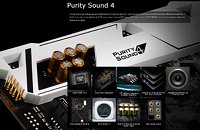Raevenlord
News Editor
- Joined
- Aug 12, 2016
- Messages
- 3,755 (1.23/day)
- Location
- Portugal
| System Name | The Ryzening |
|---|---|
| Processor | AMD Ryzen 9 5900X |
| Motherboard | MSI X570 MAG TOMAHAWK |
| Cooling | Lian Li Galahad 360mm AIO |
| Memory | 32 GB G.Skill Trident Z F4-3733 (4x 8 GB) |
| Video Card(s) | Gigabyte RTX 3070 Ti |
| Storage | Boot: Transcend MTE220S 2TB, Kintson A2000 1TB, Seagate Firewolf Pro 14 TB |
| Display(s) | Acer Nitro VG270UP (1440p 144 Hz IPS) |
| Case | Lian Li O11DX Dynamic White |
| Audio Device(s) | iFi Audio Zen DAC |
| Power Supply | Seasonic Focus+ 750 W |
| Mouse | Cooler Master Masterkeys Lite L |
| Keyboard | Cooler Master Masterkeys Lite L |
| Software | Windows 10 x64 |
A post on Reddit is doing the rounds from user elmor, a well-renowned enthusiast overclocker who works for ASUS' ROG Motherboard R&D - specifically, in the development of overclocking and enthusiast features. In his post, he talks about the posture of some motherboard makers, as well as about the state of the market as is, with some interesting tidbits thrown in.
One of the most interesting tidbits to be gleaned from his post is that from his perspective, overclocking's biggest supporters are Intel and AMD, who "seriously love overclocking and have excellent people pushing it internally"? AMD I understand - two generations now they've graced us with unlocked-multiplier processors. Intel, on the other hand, has locked-in overclocking efforts with their K-series processors, and have recently told enthusiasts that they should stop overclocking their i7 7700K CPUs, so... I'm a bit on the fence with the blue giant on that specific regard, at least when it comes to mainstream overclocking. My locked i5 6400 is doing just great in the overclocking department, mind you - just not thanks to Intel. Interestingly, Elmor also sets NVIDIA "in the corner of shame" because of their "reluctance to help us push the limits of PC hardware and locking things down more and more."

Elmor also specifically calls out MSI - giving the example of their X370 Xpower motherboard - as being a showcase of product development mainly guided by something akin to "slapping LEDs on it and call it gaming." And this is something that can be further developed, so bear with me for a little while.

The number of advertised features on motherboards have been growing exponentially (pardon my mathematically inaccurate statement, but you get the point.) Manufacturers have been more and more tending towards a "checklist" development so as to offer all the same bangs and whistles that their competitors do, while trying to throw in a specific twist of their own. There is an overabundance of features which all beg to be tested, but at the same time, they're mainly the same ideas and features implemented in a slightly different way, worded with a huge amount of marketing sugar sprinkled on top.


It's a race towards the top, with each manufacturer vying for the consumer's attention, which naturally also ends up bringing a feeling of "been there, done that" in regards to motherboards and their features. If one simply counts the number of implementations of a simple M.2 thermal shield, or an on-board Realtek audio chip, or a manufacturer's specific LED implementation and control on a motherboard level... Between May 14th and April 1st, we here on TPU have covered north of 20 new motherboard releases, and I'm pretty sure a few have slipped through the cracks.
This brings about the topic of market - and feature - saturation and overlapping. A quick and dirty check shows there are at least 59 (!) different motherboards which pack Realtek's ALC 1220 audio solution. Each manufacturer, however, has a distinct marketing for their product, be it Audio Boost (MSI), Supreme FX (ASUS), Purity Sound(ASRock), AMP-UP Audio (Gigabyte), Audio Boost 4 (MSI) or some other marketing naming.




This cutthroat competition and rapid pace of product launches, releases and re-releases with added features also ends up impacting review cycles and timing, as you could expect. The fact is that the number of advertised features is just too great to extensively cover, and keeping up with, with the depth we would like. I'd say that TPU's reviews - courtesy of our own excellent cadaveca - tend to go deeper than the norm, but that's also part of the reason why there are relatively few of them.
Baseline quality of any given motherboard, from the most bare-bones model to the highest of the top-end, have improved substantially over the years. This makes attributing review scores - or better, achieving differentiation through review scores - harder. And sure, there is a level of diplomacy involved regarding review scores. Is it the right thing to do to give a 7 to a motherboard because some non-essential features are slightly buggy? Should we award the 7 and "kill" the product's image outright, or be diplomatic - some would say sensible - and attribute a score based on the the delivery and the potential of the product? We've all heard of some bug fixes doing wonders for any given product. And a hypothetical 8.5 with reservations regarding the required fixing of some bugs, or a 7 solely on the basis that the bugs exist, paint completely different pictures. Fairness is a hard descriptor to achieve, but it's what must be sought after.



Imitation is said to be the sincerest form of flattering, and the entire market (not just the motherboard market, mind you), is built on it. Whether or not this is healthy is another matter entirely - companies who invest in new features do so knowing that their competitors will immediately look towards matching and surpassing their own implementation. They may have a head-start, but it won't ever be a significant one - and original design, feature and product development is much more expensive and time-consuming than imitation. Paving the road is the hardest part, not actually riding it.
View at TechPowerUp Main Site
One of the most interesting tidbits to be gleaned from his post is that from his perspective, overclocking's biggest supporters are Intel and AMD, who "seriously love overclocking and have excellent people pushing it internally"? AMD I understand - two generations now they've graced us with unlocked-multiplier processors. Intel, on the other hand, has locked-in overclocking efforts with their K-series processors, and have recently told enthusiasts that they should stop overclocking their i7 7700K CPUs, so... I'm a bit on the fence with the blue giant on that specific regard, at least when it comes to mainstream overclocking. My locked i5 6400 is doing just great in the overclocking department, mind you - just not thanks to Intel. Interestingly, Elmor also sets NVIDIA "in the corner of shame" because of their "reluctance to help us push the limits of PC hardware and locking things down more and more."

Elmor also specifically calls out MSI - giving the example of their X370 Xpower motherboard - as being a showcase of product development mainly guided by something akin to "slapping LEDs on it and call it gaming." And this is something that can be further developed, so bear with me for a little while.

The number of advertised features on motherboards have been growing exponentially (pardon my mathematically inaccurate statement, but you get the point.) Manufacturers have been more and more tending towards a "checklist" development so as to offer all the same bangs and whistles that their competitors do, while trying to throw in a specific twist of their own. There is an overabundance of features which all beg to be tested, but at the same time, they're mainly the same ideas and features implemented in a slightly different way, worded with a huge amount of marketing sugar sprinkled on top.


It's a race towards the top, with each manufacturer vying for the consumer's attention, which naturally also ends up bringing a feeling of "been there, done that" in regards to motherboards and their features. If one simply counts the number of implementations of a simple M.2 thermal shield, or an on-board Realtek audio chip, or a manufacturer's specific LED implementation and control on a motherboard level... Between May 14th and April 1st, we here on TPU have covered north of 20 new motherboard releases, and I'm pretty sure a few have slipped through the cracks.
This brings about the topic of market - and feature - saturation and overlapping. A quick and dirty check shows there are at least 59 (!) different motherboards which pack Realtek's ALC 1220 audio solution. Each manufacturer, however, has a distinct marketing for their product, be it Audio Boost (MSI), Supreme FX (ASUS), Purity Sound(ASRock), AMP-UP Audio (Gigabyte), Audio Boost 4 (MSI) or some other marketing naming.




This cutthroat competition and rapid pace of product launches, releases and re-releases with added features also ends up impacting review cycles and timing, as you could expect. The fact is that the number of advertised features is just too great to extensively cover, and keeping up with, with the depth we would like. I'd say that TPU's reviews - courtesy of our own excellent cadaveca - tend to go deeper than the norm, but that's also part of the reason why there are relatively few of them.
Baseline quality of any given motherboard, from the most bare-bones model to the highest of the top-end, have improved substantially over the years. This makes attributing review scores - or better, achieving differentiation through review scores - harder. And sure, there is a level of diplomacy involved regarding review scores. Is it the right thing to do to give a 7 to a motherboard because some non-essential features are slightly buggy? Should we award the 7 and "kill" the product's image outright, or be diplomatic - some would say sensible - and attribute a score based on the the delivery and the potential of the product? We've all heard of some bug fixes doing wonders for any given product. And a hypothetical 8.5 with reservations regarding the required fixing of some bugs, or a 7 solely on the basis that the bugs exist, paint completely different pictures. Fairness is a hard descriptor to achieve, but it's what must be sought after.



Imitation is said to be the sincerest form of flattering, and the entire market (not just the motherboard market, mind you), is built on it. Whether or not this is healthy is another matter entirely - companies who invest in new features do so knowing that their competitors will immediately look towards matching and surpassing their own implementation. They may have a head-start, but it won't ever be a significant one - and original design, feature and product development is much more expensive and time-consuming than imitation. Paving the road is the hardest part, not actually riding it.
View at TechPowerUp Main Site








